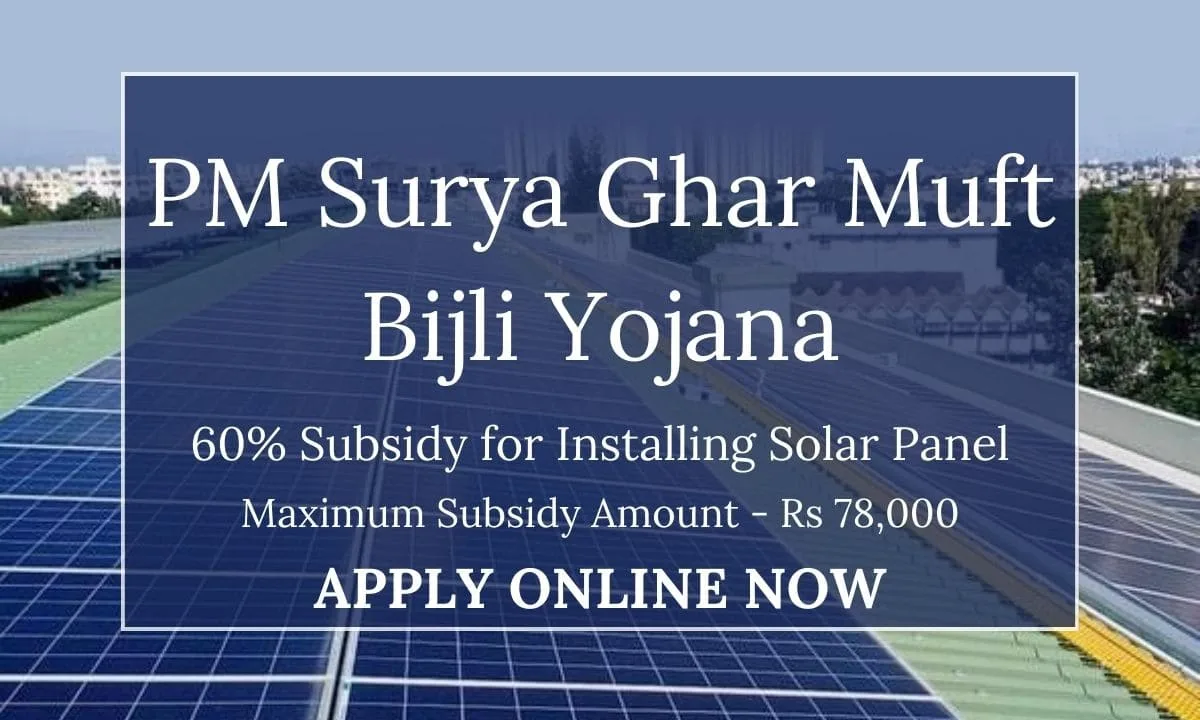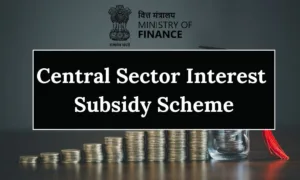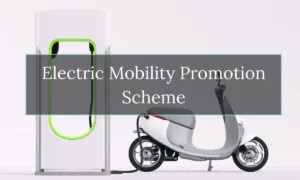In a concerted effort to promote solar power and sustainable development, Prime Minister Narendra Modi announced on February 13, 2024, the initiation of the ‘PM Surya Ghar Muft Bijli Yojana.’ This ambitious project aims to illuminate one crore households by providing up to 300 units of complimentary electricity every month, involving a substantial investment exceeding Rs 75,000 crore. In this article, we will talk about PM Surya Ghar Muft Bijli Yojana in detail. We will also look into PM Surya Ghar Muft Bijli Yojana eligibility criteria, PM Surya Ghar Muft Bijli Yojana documents required, PM Surya Ghar Muft Bijli Yojana subsidy amount, PM Surya Ghar Muft Bijli Yojana apply online and more.
Please Note: This scheme was first launched as Solar Rooftop Yojana on December 12, 2014. Under this scheme, a maximum subsidy of 40% was given to the beneficiary with an option to send surplus energy back to DISCOM.
What is PM Surya Ghar Muft Bijli Yojana?
PM Surya Ghar: Muft Bijli Yojana is a Central Financial Assistance (CFA) scheme that was launched on February 13, 2024, by the Ministry of New and Renewable Energy to encourage citizens of India to install solar panels in their homes. This is done to reduce the burden of installing solar panels by providing financial assistance to the residents. If a resident decides to install a solar rooftop panel in his home, he can save up to 60% of the installation cost. This all is done to boost the usage of solar energy in the country and the government is somewhere getting success in the same.

During the announcement of PM Surya Ghar Muft Bijli Yojana, PM Modi emphasized the government’s commitment to sustainable development and the well-being of its citizens. He highlighted the comprehensive support, including significant subsidies directly deposited into individuals’ bank accounts and highly concessional bank loans, to alleviate any financial burden on the public. The entire process will be streamlined through a National Online Portal to integrate all stakeholders seamlessly.
To enhance the scheme’s grassroots implementation, urban local bodies and panchayats will receive incentives for promoting rooftop solar systems within their jurisdictions. Modi underscored the multifaceted benefits of the initiative, including increased income, reduced power bills, and employment opportunities for the populace. The Prime Minister expressed confidence that this program would contribute significantly to advancing the nation’s solar energy adoption and fostering sustainable progress. Let’s talk about the scheme in detail.
| PM Surya Ghar Muft Bijli Yojana 2023 Key Highlights | |
| PM Surya Ghar Muft Bijli Yojana Launched Date | February 12, 2024 |
| PM Surya Ghar Muft Bijli Yojana Official Website | National Portal for Rooftop Solar |
| PM Surya Ghar Muft Bijli Yojana Objective | To make India self-sufficient in energy generation and thus providing heavy subsidies with Highly Subsidized bank interest rates for loans. |
| PM Surya Ghar Muft Bijli Yojana Who can apply | Individual HouseholdInstitutionalCommercialIndustrialSocial SectorGovernment Sector |
| PM Surya Ghar Muft Bijli Yojana Maximum Subsidy Amount | Rs 30,000/ per kW (for Residential) up to 2KW Rs. 18,000/- per kW additional Capacity up to 3KW Rs 78,000 larger than 3 kW |
| Subsidy% (2024) | 60% of the total installation cost. |
| PM Surya Ghar Muft Bijli Yojana Solar Panel Limit | 3KW |
| PM Surya Ghar Muft Bijli Yojana Mode of Application | Online |
| PM Surya Ghar Muft Bijli Yojana comes under which Ministry | Ministry of New and Renewable Energy |
| PM Surya Ghar Muft Bijli Yojana Customer Care Number | 1800 2 33 44 77 |
It should be noted that the subsidy will be given on installing On Grid Solar Setup only. No subsidy will be provided for Off-Grid solar systems. Let’s understand about types of solar system setups first.
Types of Solar Setup under PM Surya Ghar Muft Bijli Yojana
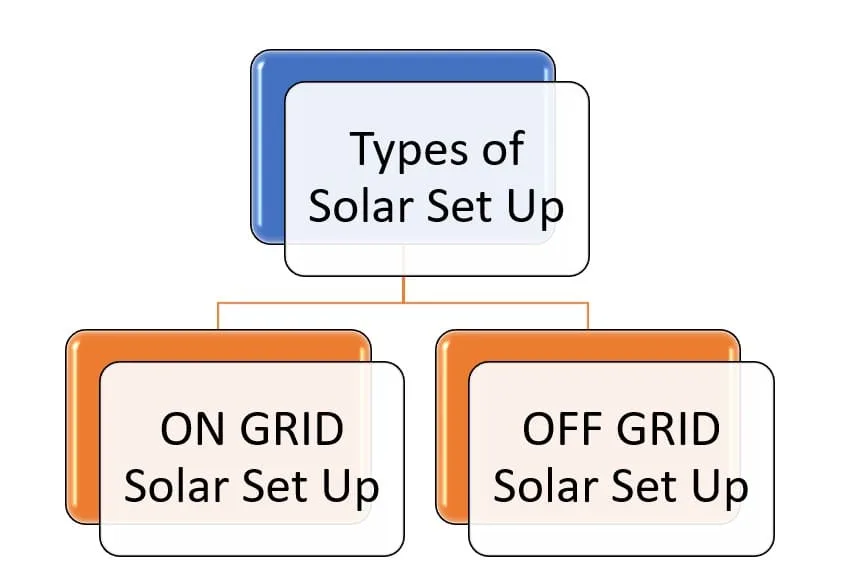
Off-Grid Solar Setup
Off-grid systems comprise solar panels, batteries, charge controllers, grid boxes, inverters, mounting structures, and balance of systems. These systems operate independently, utilizing batteries to store the solar power they generate.
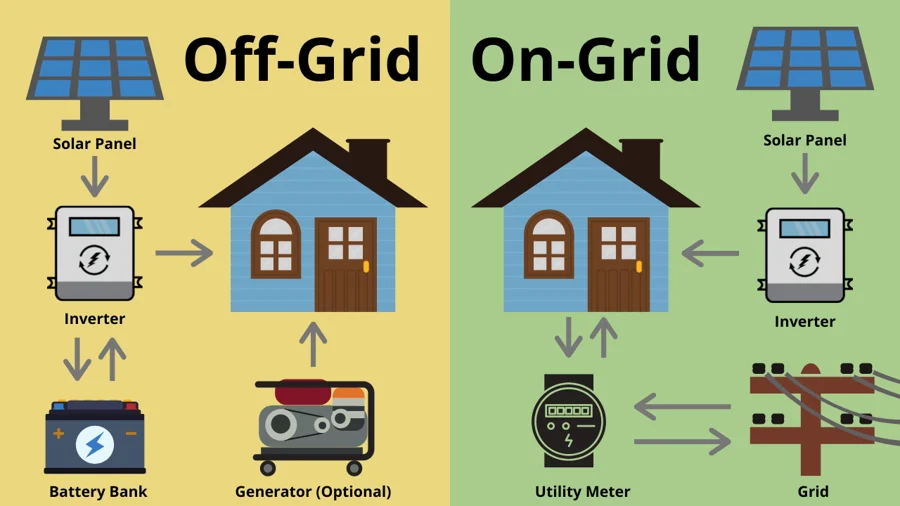
Source: Internet
Being off-grid implies a lack of connection to the grid’s power system or utility company. However, this autonomy comes with disadvantages. One drawback is the necessity to invest in backup batteries, which can be costly and are not considered environmentally friendly. The absence of government subsidies for such solar setups further adds to the economic challenges.
Another drawback is the limited consumption capacity, restricted by the stored energy in the battery, as off-grid systems are not linked to a grid power system. This limitation contradicts the core objectives of going solar, which typically include saving money and adopting a greener lifestyle. In essence, the off-grid approach may hinder the overall purpose and benefits associated with solar energy adoption.
ON Grid Solar Setup ( SUBSIDY Model)
In an on-grid solar configuration, the system is typically connected to the local utility grid, making it a common choice for residential homes. This setup accommodates the fluctuating energy needs of households, a flexibility not achievable with off-grid systems.
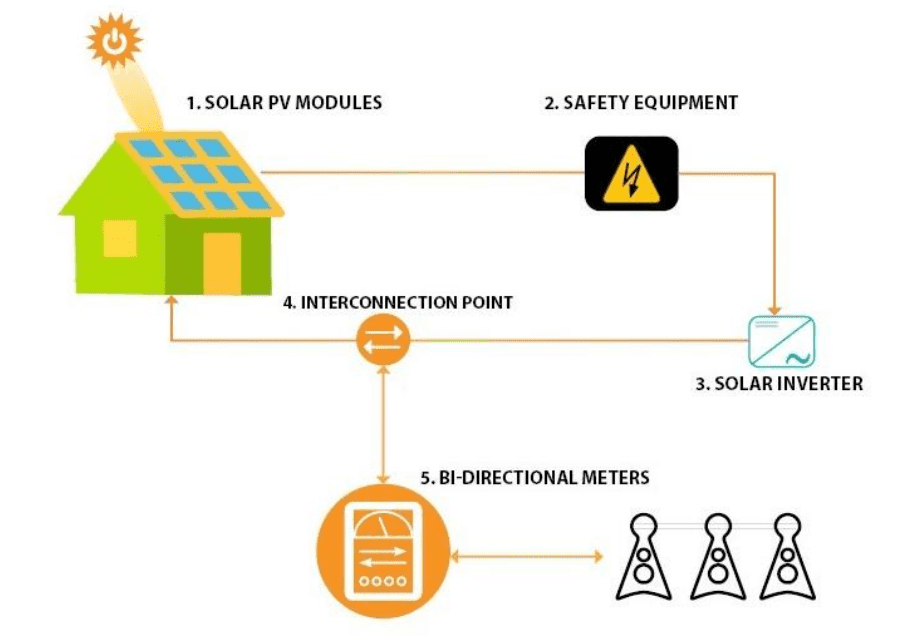
If your solar panels generate more energy than your consumption demands, the surplus is fed back into the grid, effectively allowing you to accrue credits with your utility company. This process is known as Net Metering.
The advantage of this approach lies in its cost-effectiveness, as it eliminates the need to invest in an expensive battery backup system to store excess energy. This way, homeowners can benefit from a streamlined and economically viable method of managing their solar energy production and consumption.
National Portal for PM Surya Ghar
On July 30, 2022, the Ministry of New and Renewable Energy launched a National Portal for Rooftop Solar. This portal was inaugurated by the Prime Minister. In this portal, individuals can apply for the solar subsidy on their own.
PM Surya Ghar Muft Bijli Yojana Subsidy Amount 2024
Here is the complete information on the Subsidy support you will get by planting a solar panel in India.
| Average Monthly Electricity Consumption (units) | Suitable Rooftop Solar Plant Capacity | Subsidy Support |
| 0-150 | 1 – 2 kW | Rs 30,000 to Rs 60,000/- |
| 150-300 | 2 – 3 kW | Rs 60,000 to Rs 78,000/- |
| >300 | Above 3 kW | Rs 78,000/- |
A complete breakup of the subsidy amount is provided below.
Case 1: When you get a subsidy on up to 2 KW
Upto 2kW = Rs. 30,000/ kW
You will get = 2 X Rs. 30,000/ kW = Rs 60,000.
Case 2: When you get a subsidy of up to 3kW
Upto 2kW = 2X Rs. 30,000/ kW = Rs 60,000.
Rest 1kW = 18,000 = 18,000
Total Subsidy = Rs 78,000.
Case 3: Beyond 3kW solar setup
A Fixed subsidy of Rs 78,000 will be provided on solar panels beyond 3kW
PM Surya Ghar Muft Bijli Yojana Solar Rooftop Calculator
To know how much money will be required to install a solar panel based on your solar plant capacity as well as monthly consumption. You can find the estimated project cost of the solar power plant so that you can decide whether you will be able to install the rooftop solar or not.
| Solar Plant Capacity | Estimated Maximum Project Cost | Subsidy Support | Reamianing Amount (To be paid by Subscriber) |
| 1 kW | Rs 47,000 | Rs 30,000/- | Rs 17,000 |
| 2 kW | Rs 86,000 | Rs 60,000/- | Rs 26,000 |
| 3 kW | Rs 1,26,000 | Rs 78,000/- | Rs 48,000 |
| 4 kW | Rs 1,85,000 | Rs 78,000/- | Rs 1,07,000 |
| 5 kW | Rs 2,25,000 | Rs 78,000/- | Rs 1,47,000 |
| 6 kW | Rs 2,40,000 | Rs 78,000/- | Rs 1,62,000 |
| 7 kW | Rs 2,80,000 | Rs 78,000/- | Rs 2,02,000 |
| 8 kW | Rs 3,20,000 | Rs 78,000/- | Rs 2,42,000 |
| 9 kW | Rs 3,60,000 | Rs 78,000/- | Rs 2,82,000 |
| 10 kW | Rs 4,00,000 | Rs 78,000/- | Rs 3,22,000 |
You can find the estimated project cost as well as the subsidy based on the consumption unit just by clicking on the Solar Rooftop Calculator. For that, you have to enter your monthly electricity bill, your land available for solar rooftops, your budget, and other things.
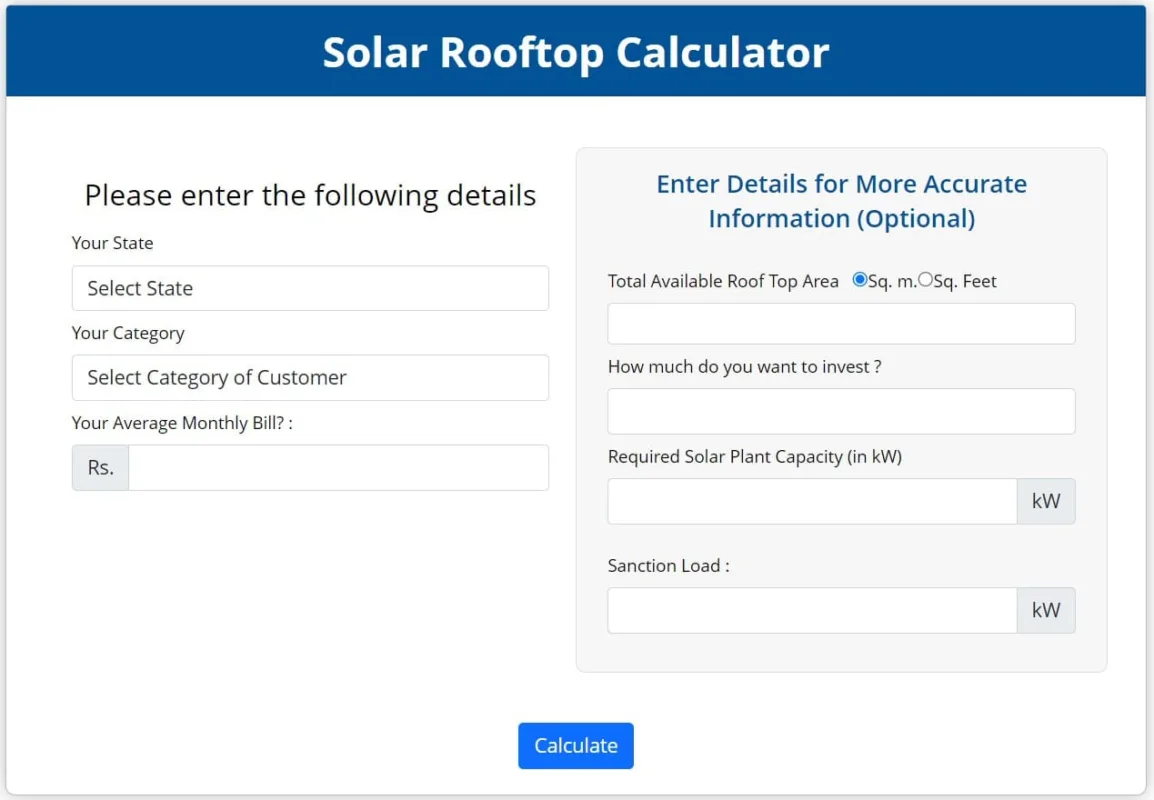
PM Surya Ghar Muft Bijli Yojana How to Apply 2024
Here are straightforward and user-friendly steps to guide you through the application process for a solar rooftop setup, following the latest government guidelines issued on February 13, 2024. Under these new regulations, subsidies will be directly deposited into the beneficiary’s account, as the government has adopted the Direct Benefit Transfer (DBT) approach to ensure a seamless and hassle-free process.
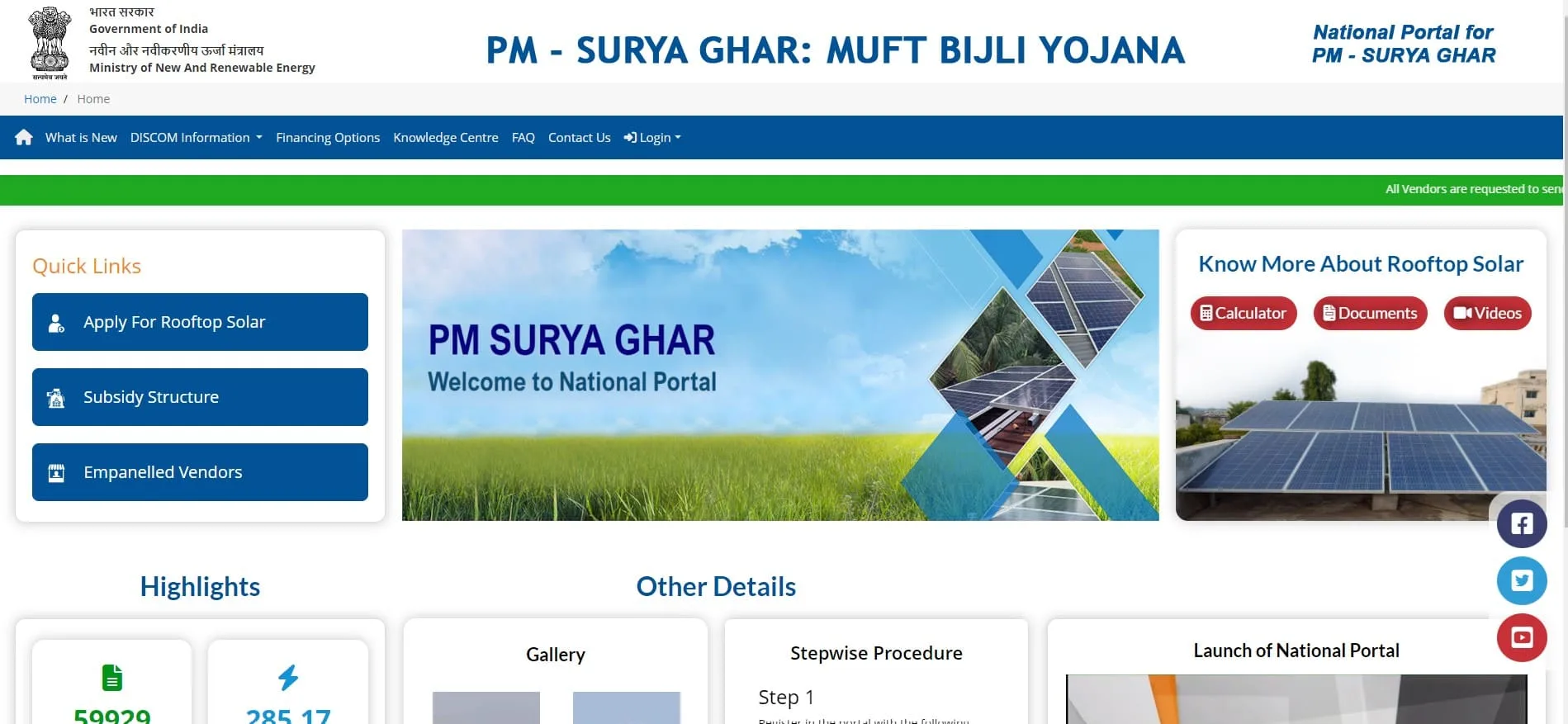
- Begin the process by registering on the portal. Provide the following information in the portal:
- Your State
- Electricity Distribution Company
- Electricity Consumer Number
- Mobile Number
- Valid Email ID
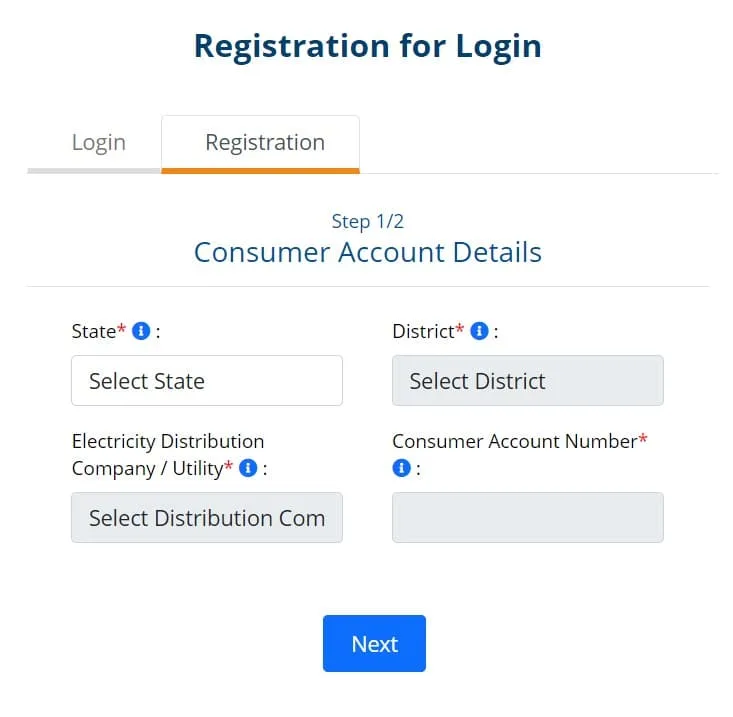
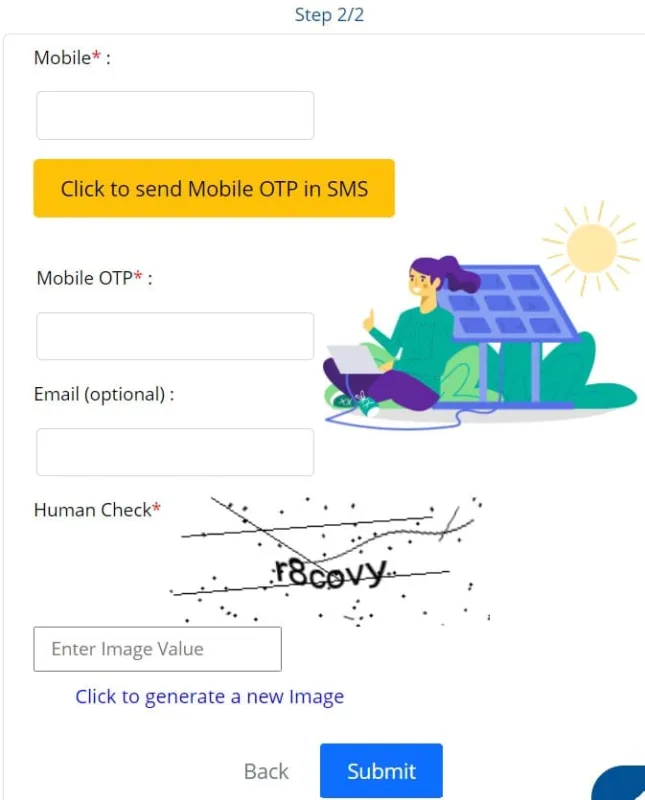
- Log In using your Consumer Number and Mobile Number. Subsequently, apply for the PM Surya Ghar using the provided form.
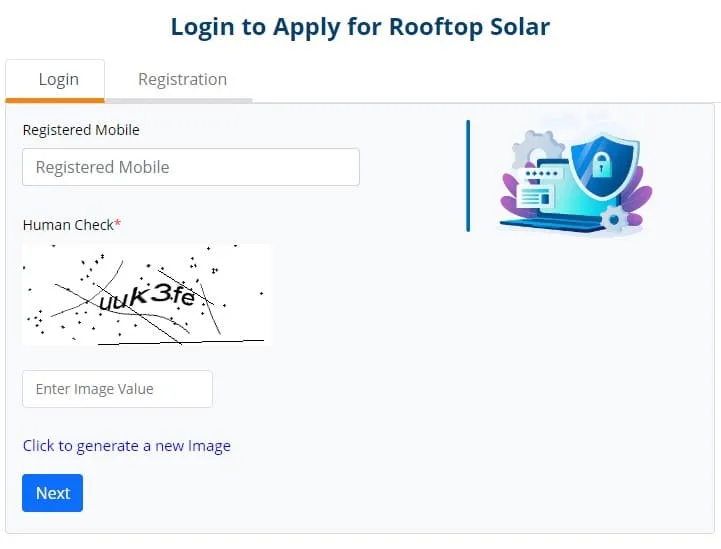
- Await feasibility approval from DISCOM. Once approval is received, proceed with the installation of the solar plant through any registered vendors affiliated with your DISCOM.
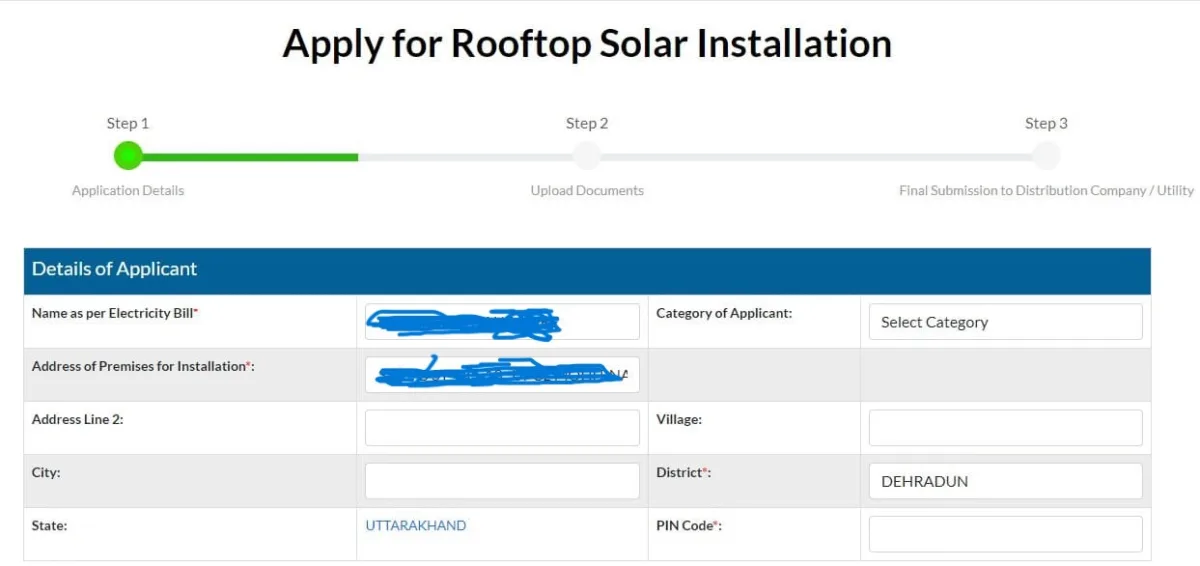
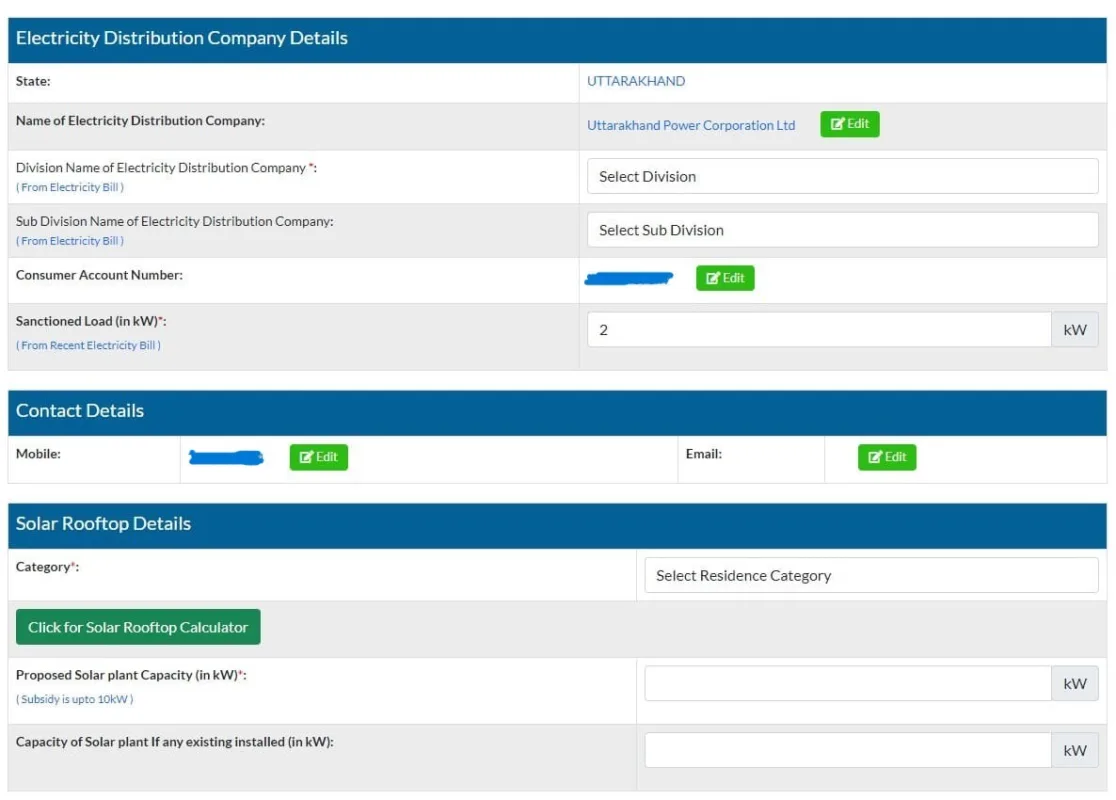
- Upon completion of the installation, submit the plant details and initiate the application for a net meter.
- Following the installation of the net meter and a thorough inspection by DISCOM, a commissioning certificate will be generated from the portal.
- Upon receiving the commissioning report, provide your bank account details along with a canceled cheque through the portal. The subsidy will be directly credited to your account within 30 working days.
PM Surya Ghar Muft Bijli Yojana FAQs
What is PM Surya Ghar Muft Bijli Yojana?
PM Surya Ghar Muft Bijli Yojana is a free electricity generation scheme. Under this scheme, a 60% subsidy will be provided to the beneficiary who wants to install solar panels in their residence.
I want to install a 2 KW solar panel on my terrace. How much subsidy will be given to me under this scheme?
You will get a total subsidy of Rs 60,000 to install a 2KW solar rooftop panel.
What is the maximum subsidy amount given under the PM Surya Ghar Muft Bijli Yojana?
A maximum subsidy amount of Rs 78,000 will be provided for installing a 3 KW panel or above.
What is the difference between off-grid and on-grid Solar Setup?
In an off-grid configuration, the system comprises solar panels, a battery, a charge controller, a grid box, an inverter, a mounting structure, and a balance of systems. This system operates independently and incorporates batteries to store the solar power generated.
Contrastingly, in an on-grid solar setup, the system is typically connected to the local utility grid. This configuration is commonly adopted by residential homes to address their fluctuating energy requirements, flexibility not achievable in an off-grid system.
How much percentage subsidy will be provided to the citizens for PM Surya Ghar Muft Bijli Yojana?
As per the new notification, the government will provide a 60% subsidy to each Residential for installing Solar Rooftop panels.
How much subsidy will be given to an individual who plants a 3kW solar panel?
A total of Rs Rs 78,000 will be provided to an individual who plants 3kW. For more details on the same, you can read the article.
Atal Jyoti Yojana 2024: Government is Installing Solar Street Lights to the Illuminate India
